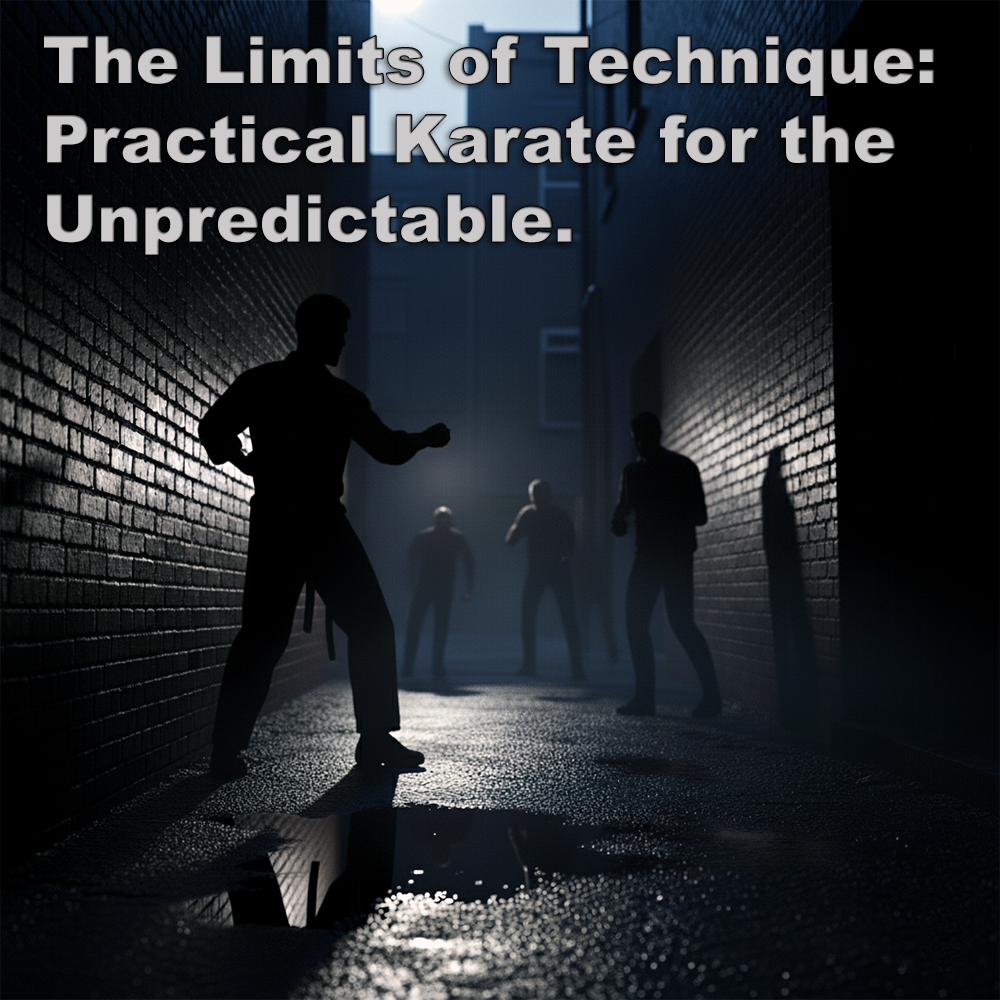
(Approx 1 minute 55 second read)
Violence is messy, fast, and unpredictable. Thinking you can stand toe-to-toe and trade blows with an attacker is a dangerous fantasy.
.
Far too many people are under the misleading impression that self-protection is all about facing an attacker toe-to-toe, putting your guard up, and “dukeing it out”!
.
Of course, there is a chance that someone skilled in striking may overcome an attacker under such circumstances. However, the reality of physical violence is that this is unlikely to happen.
.
When a striker’s ability to hit is removed or not possible, what happens next?
.
How are you able to protect yourself when your punch fails, or you are caught off guard and disoriented – be it in an aggressive clinch while struggling for balance, being seized at an ATM, in a car or bus, in a pub, at a table in a restaurant, tackled, slammed against something, or on the ground?
.
Whatever you believed might protect you often falls apart under the overwhelming pressure and brutality of the encounter.
.
There’s a naive belief, held by many people who teach or study traditional martial arts, that attacks will be predictable and similar to what has been practiced in the dojo.
.
I was recently contacted by a Shotokan practitioner who told me how wrong I was when discussing blocks and their usage. “I can make these blocks work,” he said. Perhaps you can – but it has to work for everyone, not just the special few.
.
Many pre-arranged drills practiced in modern karate performed by compliant partners do not come close to the aggressive reality, brutality, and unpredictability of true violent encounters.
.
Which drills, for example, prepare you for someone screaming vulgar obscenities in your face, being aggressively seized, shoved, slapped, struck multiple times, or tackled, let alone attacked from behind?
.
The expression “train like you fight” comes to mind when preparing for what real self-defense really is.
.
If your drills do not include clinch work, dirty fighting, losing your balance, locking or controlling arms and legs, blood and air deprivation, ground fighting, biting, escapes, and counters, then without these tools in your box, you are simply unprepared.
.
From my years teaching at the dojo and working in real-world situations, I’ve seen how quickly things can go wrong.
.
Of course, none of this matters if your reason for practicing is sport, cultural recreation, fitness or fun. But if you have to fight, what happens when it goes horribly wrong and you’re incapable of dealing with it?
.
“I suppose it is tempting, if the only tool you have is a hammer, to treat everything as if it were a nail.”
.
So, don’t over-rely on a familiar tool. Not all problems can be fixed by punching.
.
.
Written by Adam Carter – Shuri Dojo.
.
.
Inspired by and with thanks to Patrick McCarthy Hanshi for his insight into practical self-defense and his “Toolbox Theory”.
